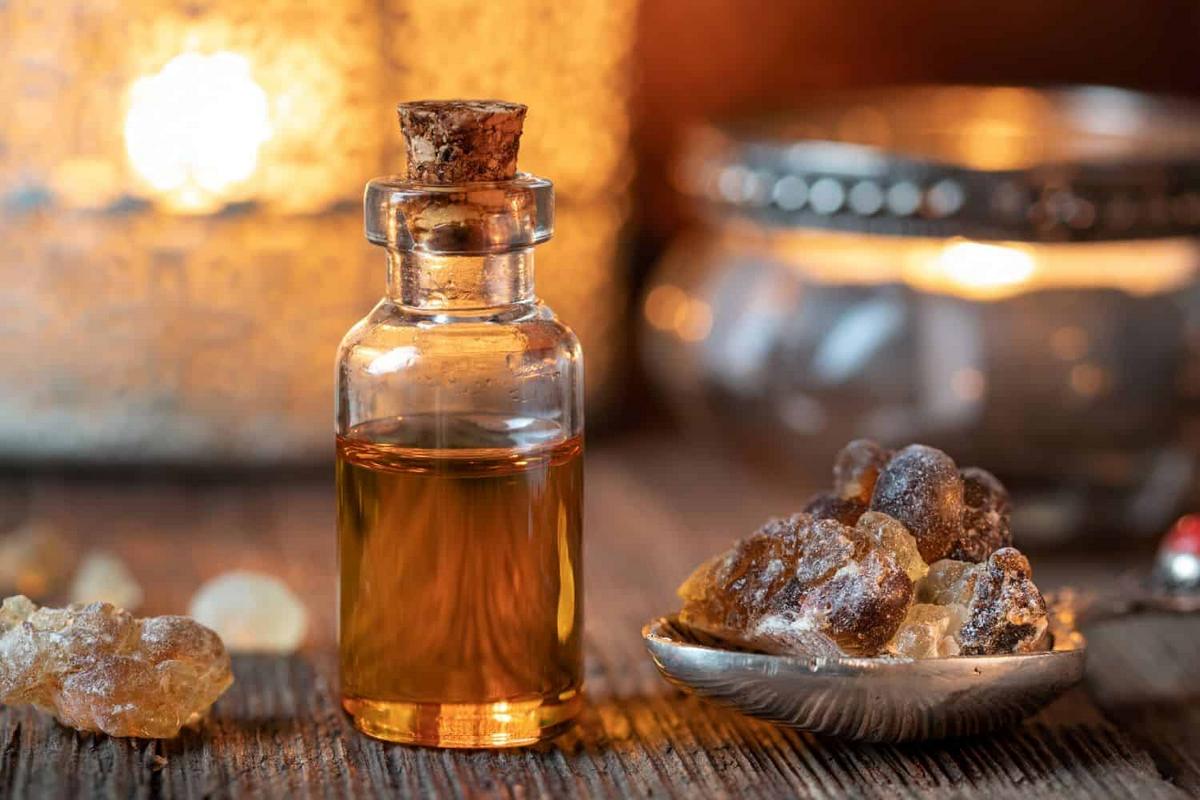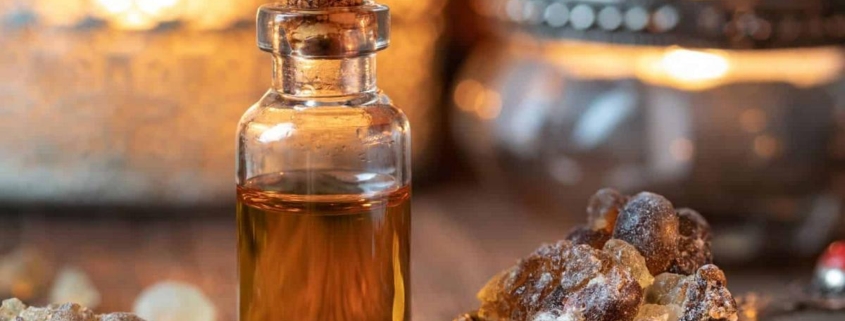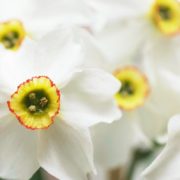Sacred Scents: Exploring the Spiritual Benefits of Frankincense and Myrrh

Frankincense and Myrrh have a long history of traditional uses for thousands of years, spanning various socio-cultural aspects, including spiritual, religious, cosmetic, and medicinal. Both of them are natural resinous substances, respectively, derived from several species of Boswellia and Commiphora trees. Since ancient ages, they have been highly valued across various continents, especially in countries like Yemen, Oman, Egypt, Greece, the Roman Empire, China, India, and more.
Table of contents
-
Historical significance of Frankincense and Myrrh
-
Spiritual and religious uses of Frankincense and Myrrh
-
Health benefits of Frankincense and Myrrh
-
How to use Frankincense and Myrrh for meditation and mindfulness
-
Frankincense and Myrrh in aromatherapy
-
The significance of Frankincense and Myrrh in alternative medicine
-
Precautions and considerations when using Frankincense and Myrrh
-
Conclusion: Incorporating Frankincense and Myrrh into your spiritual practice
Historical significance of Frankincense and Myrrh
Frankincense and myrrh have a long history of traditional uses for thousands of years, spanning various socio-cultural aspects, including spiritual, religious, cosmetic, and medicinal. Both of them are natural resinous substances, respectively, derived from several species of Boswellia and Commiphora trees. Since ancient ages, they have been highly valued across various continents, especially in countries like Yemen, Oman, Egypt, Greece, the Roman Empire, China, India, and more.
Spiritual and religious uses of Frankincense and Myrrh
Frankincense and myrrh are ancient resins with significant spiritual symbolisms across various religions, including Islam, Christianity, Judaism, and Paganism. Historically, they are considered extensive aids to intensifying concentration, devotion, and prayer, symbolizing spiritual awakening and purification. Religious people from diverse faiths used both myrrh and frankincense as incense to purify spiritual and religious places. They have been thought to have a marvelous capacity to remove negative energies, an important aspect of creating a spiritual ambiance.
Health Benefits of Frankincense and Myrrh
Both of them also have a long history of traditional use in medicine to treat a range of health complications for thousands of years. Depending on the beneficial aspects, each has its own medicinal and combined uses. Let’s look at some of their benefits one by one:
Potential health benefits of frankincense:
- It may help reduce inflammation and pain, such as skin inflammation, joint inflammation, and their associated symptoms, including pain, swelling, etc.
- It may help improve digestive health and control gut-related issues like gas, flatulence, and bloating
- It may help lower aging, especially that caused by UV radiation
Potential health benefits of myrrh:
- It may help with faster wound healing
- It may help develop and maintain healthy skin
- It may help with pain and inflammation, especially for people with rheumatoid arthritis
Potential health benefits of combined use:
- It may help improve blood circulation and alleviate pain
- It may help in managing inflammatory disorders
- It may help heal skin conditions and wounds faster
- It may help clear phlegm, coughs, and congestion in the airways
- It may help maintain mouth, gums, and throat health
- In ancient wisdom, they had aphrodisiac uses as well
How to use Frankincense and Myrrh for meditation and mindfulness
There are many ways frankincense and myrrh can be used for meditation and mindfulness, including aromatherapy, massage, and as incense, just to name a few. Here’s a list of some common ways:
Direct inhalation: You might consider inhaling the scent directly from the container or a cotton ball, cloth, tissue, or towel
Using a diffuser: Consider adding a few drops of myrrh and frankincense essential oils to a diffuser to create an ambiance filled with a mesmerizing scent.
Bath: You may also consider putting some of these essential oils into your bath water to get a relaxed soak
Massage: You may consider mixing these essential oils with some carrier oils like coconut, olive, and jojoba oil to dilute them and massage them on the foot or skin
Using an incense burner: You can consider burning their resins in an electric or charcoal incense burner to increase the purity and cleanliness of the space.
Frankincense and Myrrh in aromatherapy
Aromatherapy is an ancient healing science based on the use of aromas or scents from natural aromatic plant extracts, especially essential oils and other aromatic compounds. This practice of managing health and boosting well-being using natural aromatic materials has existed for thousands of years across many cultures worldwide.
In ancient wisdom, the aromatic resins of frankincense and myrrh have been valued in traditional medicine for centuries for managing and preventing various health conditions. They have been used both ways, individually and in combination.
Some common uses include, but aren’t limited to:
Respiratory health: The essential oil of frankincense has been found to have beneficial effects on clearing phlegm and coughs and is also helpful in managing other respiratory infections.
Skincare: Frankincense and myrrh can help with a variety of skin conditions, such as acne, pimples, and wrinkles, as well as others.
Pain relief: Oils derived from frankincense and myrrh have significant anti-inflammatory and analgesic effects. They can help reduce pain and associated symptoms like swelling from rheumatoid arthritis, osteoarthritis, etc., and may help with knee joint pain, neck pain, and back pain.
Mood: Frankincense and myrrh have noticeable benefits of elevating mood, making them highly beneficial for controlling anxiety, stress, and depression.
Wound healing: Myrrh essential oils have tremendous wound-healing properties that can help heal wounds faster.
Focus and calmness: Frankincense and myrrh have been found to have positive effects on improving relaxation, which in turn can help improve mental focus and calmness.
The significance of Frankincense and Myrrh in alternative medicine
As we already discussed before, frankincense and myrrh have a long history of medicinal use since ancient times. They have long been used in traditional medicines, especially in various alternative medicines such as traditional Chinese medicine (TCM), aromatherapy, Indian traditional medicine (Ayurveda), and more.
Essential oils derived from frankincense and myrrh contain vital phytochemical (plant-chemical) compounds like terpenoids, which have been found to have significant medicinal properties, including anti-inflammatory, analgesic, antibacterial, and may also help with certain types of cancer. The healing properties of frankincense and myrrh are also mentioned in ancient scriptures.
Their potential uses in alternative medicines:
Anti-inflammatory: Frankincense and myrrh have tremendous anti-inflammatory properties that can help treat various inflammatory diseases, such as rheumatoid arthritis.
Antibacterial: Historically, frankincense and myrrh have been used to treat various infections due to their antibacterial properties.
Anti-cancer: Frankincense and myrrh are also found to have anti-cancer properties that may help with certain types of cancer, especially gastric and colorectal cancer. However, documented studies are still limited, and more research is needed to confirm these benefits. [1]
Pain relief: Frankincense and myrrh have noticeable analgesic qualities, and they have long been used to treat various pain conditions, especially those related to inflammatory and neuropathic conditions.
Respiratory health: The quality of fighting against infections of frankincense and myrrh is also beneficial for maintaining respiratory health. They can help clear mucus and coughs and relieve symptoms of several respiratory infections.
Skin conditions: Frankincense and myrrh are highly beneficial in treating various skin conditions such as acne, wrinkles, skin sores, and wounds.
Precautions and considerations when using Frankincense and Myrrh
They are possibly safe and well-tolerated for most people when used in moderation as medicines or spiritual practices. Very few people may experience their body overreacting to these ingredients, which causes symptoms of allergic reactions such as skin irritation, difficulty breathing, and nausea.
However, if you see any of these adverse reactions, stop using them immediately. It’s also best to perform a patch test before starting everyday use.
Conclusion: Incorporating Frankincense and Myrrh into your spiritual practice
Frankincense and myrrh have intense spiritual roots. Since ancient times, these aromatic resins have been used in diverse spiritual and religious practices, as well as for healing and cosmetic purposes. They have been found to have significant positive effects on protecting and purifying spiritual spaces and increasing the intensity of concentration during prayers.
So, if you haven’t yet experienced the spiritual and healing effects of frankincense and myrrh, it’s time to give them a try.
Disclaimer: This content aims to offer general information to our readers and should not be considered professional medical advice. For medicinal use, ask any licensed aromatherapist or health care provider before use.
Here you can see our pure and natural Myrrh and Frankincense
Here are all our Scents containing Frankincense
Here are all our Scents containing Myrrh
REFERENCES
- Anti-Inflammatory and Anti-Cancer Activity of Boswellic Acids from Frankincense (Boswellia serrata Roxb. et Colebr, B. carterii Birdw.)
The oleo-resinous gum of Boswellia trees has been used for religious rituals, but also for medical purposes in different civilizations for ages. The active principles of the gum resin are boswellic acids. The ethnopharmacology of frankincense indicate activity towards inflammatory diseases and cancer. There is compelling evidence from experimental investigations that boswellic acids reveal anti-inflammatory activity, and the results of clinical trials confirm that Boswellia extracts are also clinically effective. No serious side effects were recorded. Occasional side effects included fatigue, vomiting, diarrhea, unspecific skin rash, azoospermia, and neutropenia. Several investigations using Boswellia extracts or isolated boswellic acids demonstrated growth inhibition of tumors in mice and rats, and increased survival time of animals. The treatment effects were associated with inhibition of AKT, reduced NF-κB activation, and down-regulation of anti-apoptotic proteins. Clinical application in glioblastoma patients showed an improvement of clinical symptoms in terms of edema reduction, but no reduction of tumor size. 2012-04-25 https://www.dl.begellhouse.com/journals/2c6306423483e001,0f258d164f94b823,7dad334131e14b8d.html -
Anti-inflammatory and anti-cancer activities of frankincense, frankincense acts by multiple mechanisms, e.g., by the inhibition of leukotriene synthesis, of cyclooxygenase 1/2 and 5-lipoxygenase, of oxidative stress, and by regulation of immune cells from the innate and acquired immune systems. Furthermore, frankincense modulates signaling transduction responsible for cell cycle arrest and inhibition of proliferation, angiogenesis, invasion and metastasis. https://www.sciencedirect.com/science/article/abs/pii/S1044579X20300341?via%3Dihub
























Thanks for sharing this wonderful article. I really enjoyed learning about the spiritual and healing benefits of frankincense and myrrh. It’s fascinating how these sacred scents have been used for centuries in meditation, wellness, and rituals. Truly inspiring!